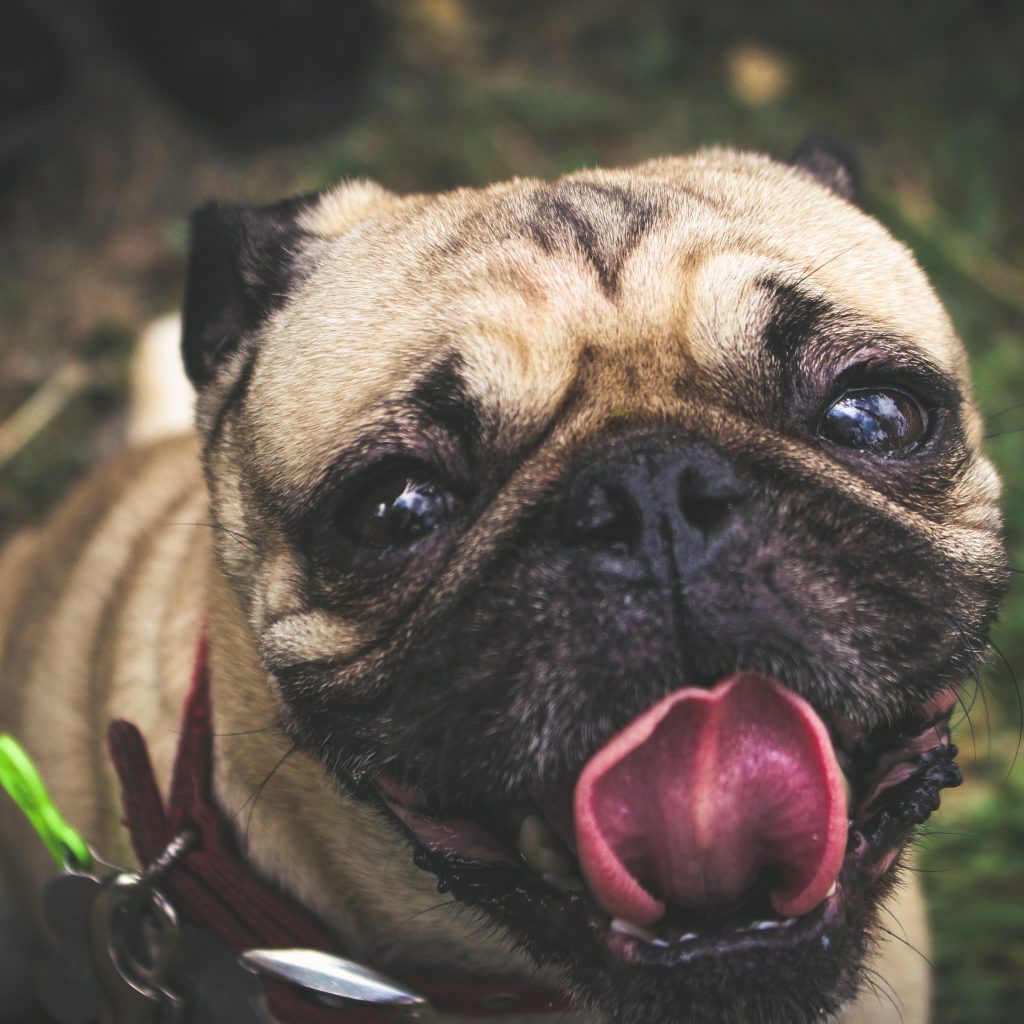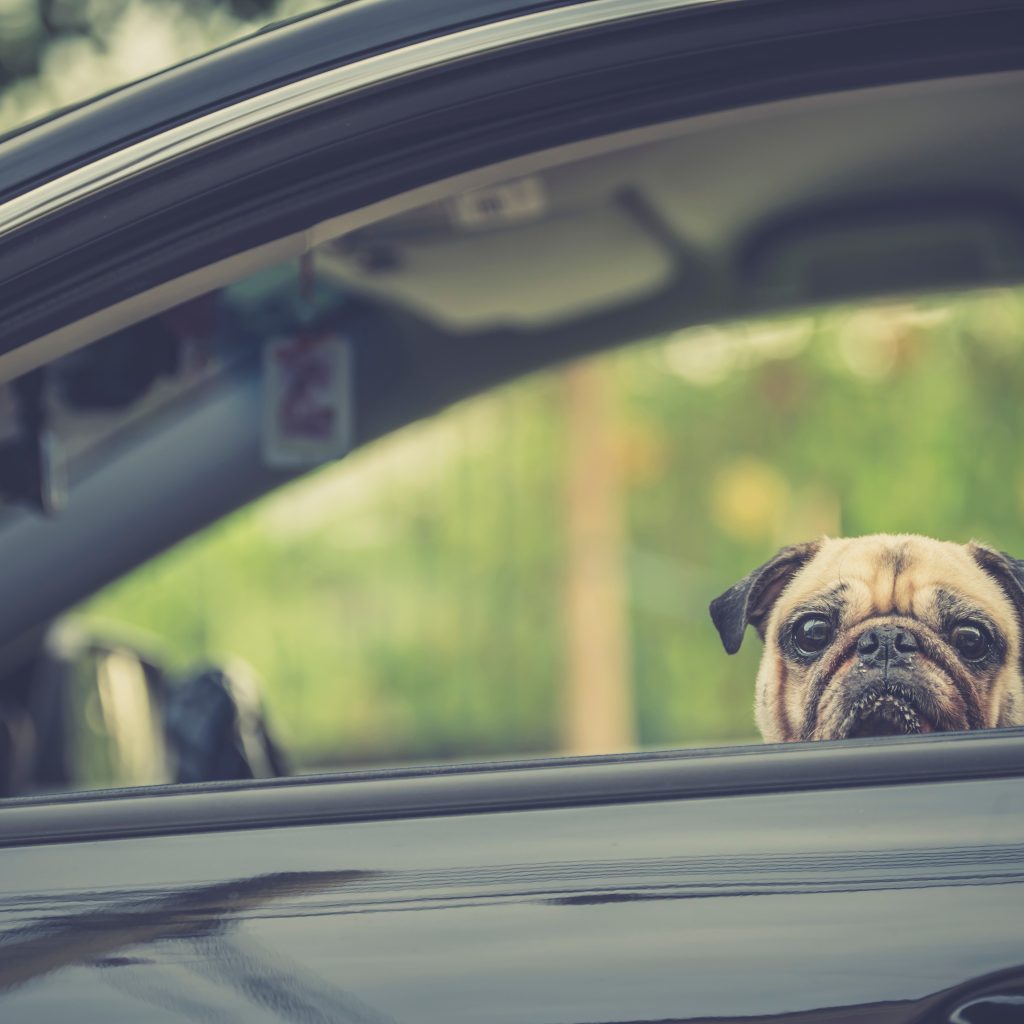7 Tips for Adopting from a Pug Rescue
When you think you are ready to find the perfect Pug, you’ll want to start at a reputable Pug rescue. It would help if you visited as many Pug rescues as possible to find your new Pug pup. Please do your research online about Pug rescues, and be sure to read reviews and compare them.
1. Ask Questions at the Pug Rescue
At the Pug rescue, chat with the people who work there about which Pugs are available for adoption. Find out how the Pugs dogs arrived and if there are any known health or behavioral issues. Just because a Pug at the Pug rescue has an issue doesn’t mean they won’t make a great pet.
Keep in mind that many of these dogs have been through a lot in their lives. They may have fear or exhibit different behaviors. Sometimes they just need a check-up and a grooming session to be good to go.
2. Observe the Pug

You’ll want to walk and play with the Pug you are interested in. Take into account several things:
● If the Pug is comfortable around you.
● If the dog is interested in playing with a ball and their energy.
● Any limping or favoring of limbs when walking or playing.
● If the Pug can see well.
● If there is a large amount of discharge coming from the eyes of the Pug.
If the dog is depressed, seems sick or lethargic, bring it to the employees’ attention at the Pug rescue. You want to adopt a Pug from the Pug rescue that seems happy, healthy, and full of energy.
Don’t settle on the first Pug you meet; go to several Pug rescues if you can. Take your time and meet several Pug dogs. When you meet that special Pug, inquire about the Pug rescue’s adoption process at that time.
3. What to Expect When You Bring a Pug Home from the Pug Rescue
There are many things to consider when you decide to bring a Pug home from the Pug rescue.
● Pugs are very social animals.
● Pugs are friendly with everyone, including people they have never met.
● Pugs shed a lot of hair.
● Pugs can’t handle extreme temperatures.
● Pugs can be very stubborn.
● Pugs grunt, snort, and snore.
● Pugs love to eat.
● Pugs are friendly, loving, and loyal to their family.
4. Ask these Questions before Adopting

● How much will feeding and training cost?
● How much time will it take to groom the Pug?
● How much time will exercise take every day?
● Are Pugs safe from my children being too rough with them?
● How much will vet bills, dog insurance, meds, and vaccines cost?
● How many hours am I home every day?
● Will there be enough time to feed and walk my Pug with other things I need to do?
● How many animals do I already have?
● Can l give all my animals attention daily?
● Do I have new furniture or a carpet?
● Will I be upset about housebreaking issues?
● Do I have enough money for vaccines, medications, three vet visits per year, and unforeseen problems?
● Can I provide the best food, treats, leash, and harness as well as other needs?
● Does my home provide stability?
● Will I move soon?
● Am I in a new relationship?
● Am I expecting a child?
● Can I take on special care as the Pug ages?
5. Financial Concerns
Pugs can get bacterial infections when bacteria get trapped in the wrinkles. You may want to consider an emergency fund of at least $1500.
Pugs have flat noses. Sometimes they can need surgery to open up their airways for them to breathe more easily. Also, their rear ends can be a bit wrinkly. This can lead to irritation of anal glands, which can result in infection. To prevent this, the anal gland may need to be expressed on occasion. The pet owner can do this; however, they may prefer the vet do it.
It would be best if you considered the following expenses with a Pug from a Pug rescue.
● Adoption fee from a Pug rescue
● First puppy exam with the vet
● Spaying and Neutering
● Vaccines
● Flea and Tick preventative
● Getting Microchipped
● Ear infection exam and treatment
● Facial infection exam and treatment
● Trimming nails
● Vet Emergency Visits
● Dry and Wet Puppy Food
● Treats
● Toys
● Bedding
● Toothpaste
● Toothbrush
● Wipes to clean
● Leash
● Harness
● Puppy pads
6. Prepare to Bring Your Pug Home

After meeting your new Pug at the Pug rescue, it will be time to prepare for them to join your family. Make sure you take the time at the Pug rescue to bond and interact with the Pug you’ve chosen to bring home. Please be sure that someone will be able to spend time with the Pug when you bring it home from the Pug rescue as well. Pugs are very social and need someone who will spend some time with them daily without fail. Pugs can be like velcro and will need attention once home. Leaving them home alone for hours will not be good.
Find out what food the Pug rescue is feeding and feed that at home in the beginning. This will ease the transition of bringing the dog home from its familiar environment. You might also want to find out if there is a blanket or toy they may have had that you can take too. This will make the transition less stressful for your Pug, leaving the Pug rescue. Be sure to ask the Pug rescue any other ways to prepare your home for a special needs dog if you adopted one.
Make sure to be familiar with your Pug’s background that you brought home from the Pug rescue. This will help you be more patient because you know what the dog has been through in the past. Learn as much as you can about the Pug breed as well. Learn everything you can about Pug personalities and potential health problems.
Prepare your home by getting toys, treats, food dishes, a water bowl, a harness, and a leash.
7. Integrating Your Pug into the Family
One frustrating thing about adopting a Pug from a Pug rescue is you might not know everything about the Pug. This may include its background and if they had a bad home in the past. You’ll only know as much as the Pug rescue, which may not be much, which is unfortunate. Many times small dogs have been rescued from abusive situations. New owners need to accommodate this.
When you bring your Pug home from the Pug rescue, it may take 3 to 8 weeks for the Pug to be comfortable in their new home. Building trust with you and other family members takes time. It may even take several months. The results of this process will be so rewarding, though. As trust builds between family members, your bond will grow with your dog.
As trust begins to build, you may notice some bad traits in your Pug. Your Pug is still learning its new living situation. You’ll need to set boundaries of what is and is not acceptable for the Pug. Training may help both of you.
Adopting a Rescue Pug is Not for Everyone
No Pug is going to be perfect, and Pug rescues are included. Many Pugs in the Pug rescue may have been placed there because of health or behavioral issues. Some issues may be from unfortunate neglect. A good Pug rescue should disclose any problems with you before you adopt it.
Adopting a Pug from a Pug rescue requires a commitment from you to work with your new Pug to blend into the family. It takes a minimum of eight weeks to get used to the new household. If you can’t work with the Pug with issues during this period, you shouldn’t adopt one from the Pug rescue.
Most Pug rescues will take the Pug back. But you are expected to do everything you can to make it work and address any problems first. Get all the information you can to be successful. Take the initiative to research on your own and strive for success.
● Pugs overheat easily and need air conditioning in the Summer.
● Pugs are not for security; they aren’t watchdogs.
● Pugs snore as much as they shed. If you are a light sleeper, a Pug is not for you.
● Pugs are stubborn when it comes to food and being housebroken.
● Pugs need some routine care when it comes to cleaning the wrinkles on their face. The wrinkles can be a place where moisture can cause infection, itching, or irritation. Pug ears also need to be cleaned for the same reasons.
● Pugs are curious, playful, and smart. They love to please you.
● Pugs can be good students.
● Pugs are social and need attention.
● Pugs love to snuggle and nap with you.
● Pugs are clingy. Think “velcro.”
● Pugs are full of love and personality.
● Pugs are clowns and will do funny stuff to get you to notice them.
● Pugs love to eat.
What to do if the Rescued Pug is Not Working Out
It would be nice if every Pug from the Pug rescue were given to their perfect match. Unfortunately, that’s not the case. Not every adoption from the Pug rescue works out.
After being so excited to adopt, it can be embarrassing to go back to the shelter. Even though it’s not your fault, you can be left upset. You’re making the best decision for the pet, though if it’s not a good fit. A good Pug rescue won’t make you feel bad about it.
Behavioral Changes after the Pug Rescue
Of course, you’ll spend some time with the Pug at the Pug rescue. You will get a good idea about their personality and energy level. The behavior once the home may be different. Maybe your Pug was shyer and quieter because they were nervous, and this was your perfect match for a Pug.
After a few weeks at home, the dog is too loud, and you can’t ‘have them in your apartment; it happens. These are changes that may need a trial run. Most shelters don’t have this option, so you have to return the dog.
Don’t Blame Yourself for Returning a Pug to a Pug Rescue
It’s easy to feel like it’s your fault when a rescued Pug from the Pug rescue doesn’t work out. If you were rescuing the Pug, are you dooming them by returning them? In most circumstances with responsible Pug rescue, no. They’ll find a home where they fit in just fine. It’s normal to feel bad, but you’re doing the right thing for the dog.
A Contractual Obligation
You might be breaking your adoption contract if you rehome your dog yourself. Most require that you return the Pug to the Pug rescue. Shelters have an interest in all of their animals, and they take steps to place them in the right home. Do not rehome your Pug from the Pug rescue on Craigslist or Facebook.
Even if you feel a bit wary of bringing your Pug back to the Pug rescue, you should be able to adopt from the Pug rescue again. The shelter won’t blacklist you because of unforeseen circumstances. Shelter returns aren’t a bad thing. Life happens, and circumstances can change, and sometimes things don’t work out.
How to Avoid Returning a Pug
You shouldn’t be embarrassed to return a Pug to the Pug rescue if it doesn’t work out. However, there are things you can do to avoid this.
First, you need to do your research before adopting a Pug and know what their needs are.
Next, you might consider fostering if your Pug rescue allows it. If not, definitely spend lots of time with the Pug, and visit the Pug rescue more than once. Take the Pug dog out to play and for a walk if you can.
After this, consider professional training or hiring a Certified Animal Behaviorist. If things still don’t work out, it’s okay to bring the Pug back to the Pug rescue. Consider trying again when the time is right.
Conclusion

Adopting a Pug from a pug rescue is very exciting. Don’t rush in and take home the first Pug you meet.
Get as much information as you can on the Pug that pulls on your heartstrings.
Anticipate any problems that you may have. Be sure to have a fund of money to take care of any unforeseen medical problems or training.
Once home, spend as much time with your new Pug dog as you can.
Try to take a few vacation days from work to be with him or her 24/7.
After a couple of weeks, if your Pug is having some typical Pug problems, get signed up for training. One of the biggest Pug problems is not respecting your boundaries. Walking all over you whenever they please or sticking their nose in your food is typical.
A Certified Animal Behaviorist may be needed for more complicated problems. You might not be able to potty train your Pug or your Pug barks nonstop.
If you can’t make it work, take your Pug back to the Pug rescue. Do not rehome them on your own.
The people at the Pug rescue care about their Pugs and want them to have a good match and be happy. And although it may be heartbreaking to take them back, that’s what you want too – you want them to be happy.

